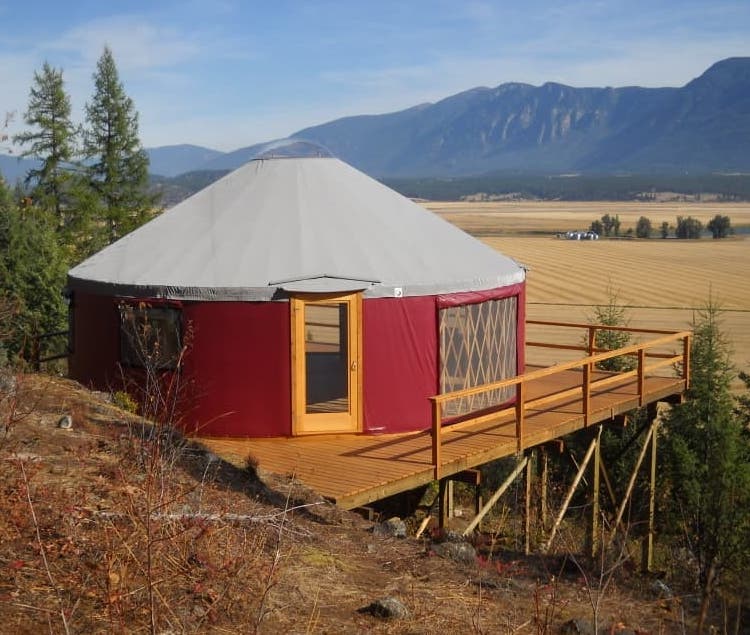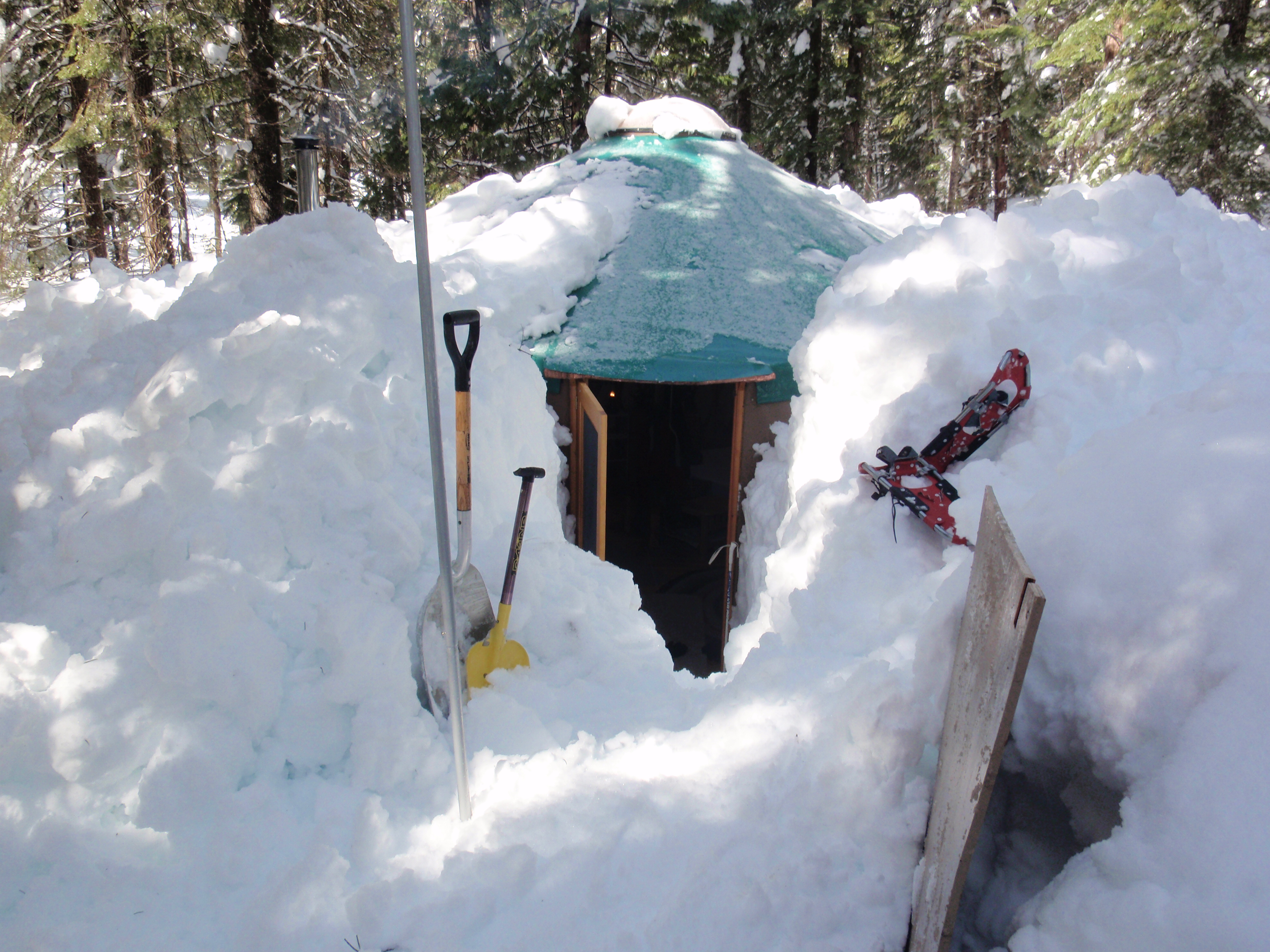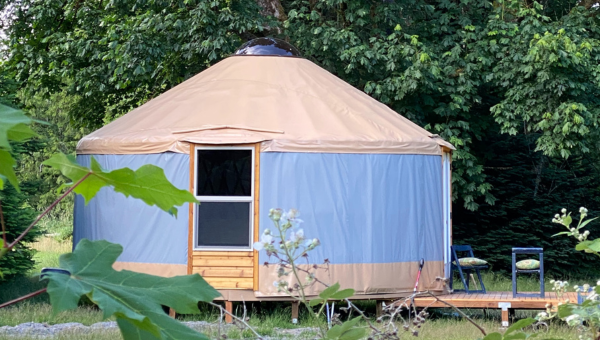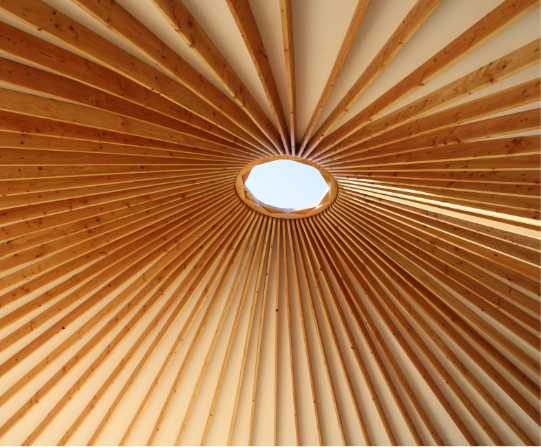
Learn About Yurts
What is a Yurt? And Does It Make Sense For You?
If you haven’t done your research or seen one in person, you might ask “what is a yurt?”. A yurt is a portable, lightweight round structure where the roof is held up under a combination of tension and compression, with no major center supports needed.
Yurts are an ancient form of portable shelter structure. Originating thousands of years ago in the steppes of central Asia, these dwellings were originally used by nomadic people of the region. There are two major types of traditional yurts – the Ger and the so called “Stani” yurts. Gers use straight roof rafters that tie directly into the lattice wall, where as the stani yurts (named because of the widespread use throughout the following geographic areas – Uzbekistan, Turkmenistan, Kazakhstan, etc) steam bend the rafters before they tie into a shorter lattice wall. All modern day North American yurts are modeled after the Ger. Modern yurt manufacturers (like Shelter Designs) still use the basic design principles of old – round shapes, lattice walls, roofs held up under tension and compression – but manufacture using high-tech, modern materials. Long-lasting waterproof outer fabrics, lightweight space-age insulation, steel fasteners and graded lumber all combine to allow modern yurts to have much higher snow and wind load ratings than traditional yurts while lasting much longer.
Today, yurts are used all over the world in a wide array of both personal and commercial use. Many people are discovering the financial freedom of living in a yurt as their full time residence, while businesses are finding how cost effective they are at providing unique, sought after rental accommodations, retail spaces, restaurants, etc. A yurt’s cost and environmental footprint, when compared to “normal” construction methods, make them an attractive alternative sustainable living shelter around the world.

Strength in Design
If designed correctly, modern day yurts are incredibly strong and are able to withstand extreme loading conditions for snow, wind, and seismic events.
The key to the strength is the balance of tension and compression that the yurt maintains under load. As the structure is stressed the roof tries to break the tension cable at the top of the wall and crush the compression ring up at the peak where all of the roof rafters tie in. The balance between tension and compression means that no central column supports are necessary (except under very extreme conditions), maintaining an open floor plan with no obstructions. Shelter Designs works with an accredited structural engineering firm licensed in all 50 states and several Canadian provinces. We will design your yurt to withstand the historic snow and wind loads in your specific location. So far we have designed our largest yurt (40’ diameter or 1256 sq. ft.) to withstand 150 lbs per sq. ft ground snow load and 120+ mph winds. To achieve superior strength ratings, Shelter Designs utilizes larger rafters, laminated door and window headers, laminated compression rings, and a larger tension cable.
Learn More
We’ve been building the finest quality yurts in America since 1999.
As you look to start your dream build, we’re confident you won’t find a better experience from start to finish than with our professional, experienced team.



